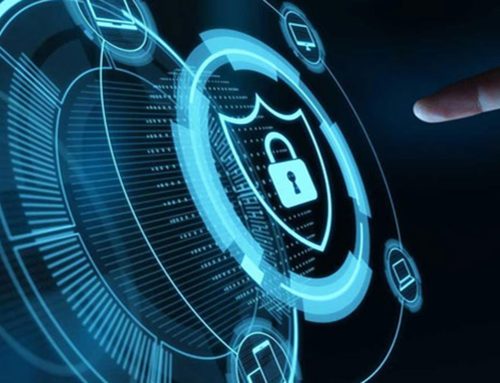Advanced Persistent Threats (APTs) are among the most sophisticated and potentially devastating cyber threats faced by organizations today. These stealthy attackers target sensitive data, critical systems, and intellectual property, often staying undetected for months or even years. For cybersecurity professionals, the ability to detect and remediate APTs is no longer optional; it’s a crucial aspect of defending organizational assets.
This guide provides an in-depth look at how cybersecurity experts can identify APTs within their networks. We’ll explore the APT lifecycle, proactive detection measures, effective tools, and real-world case studies, equipping you with practical strategies to stay ahead of these advanced threats.
Understanding Advanced Persistent Threats
What Are They and Why Are They Significant?
Advanced Persistent Threats are prolonged, targeted cyberattacks carried out by sophisticated adversaries, often backed by nation-states or highly organized cybercriminal groups. Unlike opportunistic attacks, APTs are meticulously planned and executed, with the primary goal of stealing sensitive information, causing financial loss, or disrupting operations.
What distinguishes APTs from other cyber threats is their persistence and stealth. Attackers work patiently to infiltrate systems, evade detection, and maintain long-term access. This makes them particularly dangerous for organizations reliant on intellectual property, financial systems, or confidential customer data.
A Perspective on Cost and Risk
APTs are expensive—not just for attackers but for their victims. According to the Ponemon Institute, the average cost of a data breach is now $4.45 million globally, and breaches involving complex APTs often result in even higher costs.
Understanding the significance of these threats is the first step toward detection and protection.
Decoding the APT Lifecycle
To effectively identify APTs, professionals must first understand their lifecycle. The APT lifecycle generally consists of the following stages:
- Reconnaissance
Attackers gather information about the target organization using open-source intelligence (OSINT), web-based research, and phishing techniques.
- Initial Intrusion
Leveraging spear-phishing emails, zero-day vulnerabilities, or poorly secured credentials, attackers establish their initial entry point.
- Lateral Movement
Once inside the network, attackers explore internal systems, escalate privileges, and establish backdoors to ensure continued access.
- Data Exfiltration
During this phase, attackers identify and extract valuable data, often using encrypted channels to evade detection.
- Persistence
Attackers install additional backdoors or maintain dormant presence, waiting for the right moment to strike again.
Understanding this lifecycle helps security professionals predict attacker behavior and pinpoint potential entry and action points.
Proactive Measures to Detect APTs
Establish a Comprehensive Security Framework
One of the best strategies for detecting APTs is a proactive posture. Consider implementing these foundational measures:
- Network Segmentation
Limit attacker mobility by breaking your network into isolated segments. Proper segmentation minimizes the damage caused during lateral movement.
- Behavioral Analysis
Regularly analyze user and system behavior to identify unusual patterns, such as unauthorized access attempts or unexpected file transfers.
- Threat Hunting
Deploy dedicated threat-hunting teams to actively search for indicators of compromise (IoCs) in your network before automated tools do.
Prioritize Frequent Security Audits
Periodic vulnerability assessments and penetration testing help identify weak links that could facilitate an APT attack. Regularly updating software and applying patches for known vulnerabilities also decreases entry points for attackers.
Tools and Technologies for APT Detection
Modern cybersecurity teams must leverage advanced tools and technologies to combat APTs. Here are some of the most effective solutions available:
1. Endpoint Detection and Response (EDR)
EDR tools like CrowdStrike and Carbon Black provide real-time monitoring and response capabilities across endpoints, ensuring early detection of malicious activities.
2. Network Traffic Analysis (NTA)
Solutions such as ExtraHop and Darktrace use AI and machine learning to monitor network traffic and identify anomalies indicative of APT activity.
3. Security Information and Event Management (SIEM)
SIEM platforms like Splunk and IBM QRadar aggregate and analyze data from networks, devices, and applications to spot compromise indicators.
4. Threat Intelligence Platforms
Tools like Recorded Future and ThreatQuotient provide access to actionable threat intelligence regarding the latest APT tactics, techniques, and procedures (TTPs).
By integrating these technologies, organizations can detect suspicious behaviors earlier and respond more effectively.
Incident Response and Remediation Strategies
Build a Playbook for APT Incidents
Every security team should have a detailed incident response plan tailored to APT scenarios. Key steps include:
- Containment
Isolate affected systems to prevent lateral movement and further compromise.
- Eradication
Remove malicious files, unauthorized accounts, and backdoors from your network.
- Recovery
Restore systems from secure backups and monitor closely to ensure attackers don’t return.
- Post-Incident Review
Conduct a comprehensive review of the incident to identify gaps in your defenses and improve future response efforts.
Train and Empower Your Team
Continuous training ensures your cybersecurity team is well-equipped to address modern threats. Focus on simulation exercises and table-top drills to test incident readiness.
Case Studies: Real-World Examples of APT Detection
Looking at real-world scenarios can provide valuable insights into APT detection and response.
1. APT28 and the DNC Hack
The Russian-backed APT28 (Fancy Bear) used spear-phishing emails to infiltrate the Democratic National Committee in 2016. Enhanced monitoring and user education could have mitigated this attack by identifying unusual access patterns earlier.
2. APT33 Targeting the Energy Sector
APT33, an Iran-sponsored group, targeted multiple energy companies using spear-phishing and custom malware. By implementing robust behavioral analytics and layered defenses, several organizations successfully identified and thwarted their activities.
Case studies highlight the need for proactive monitoring, user awareness programs, and robust endpoint protections.
Stay Ahead in the APT Landscape
Advanced Persistent Threats are among the most significant risks in modern cybersecurity, with the potential to disrupt businesses, leak sensitive information, and cause untold financial damage. By understanding the APT lifecycle, adopting proactive detection measures, and leveraging cutting-edge tools, cybersecurity professionals can rise to the challenge of detecting these advanced adversaries.
Want to stay ahead? Invest in regular training, adopt innovative technologies, and cultivate a culture of vigilance across your organization. Proactive threat hunting and incident preparedness are key to surviving in today’s high-stakes cybersecurity landscape.
Master the art of APT detection and stay one step ahead of attackers because, in this game, the stakes couldn’t be higher.





